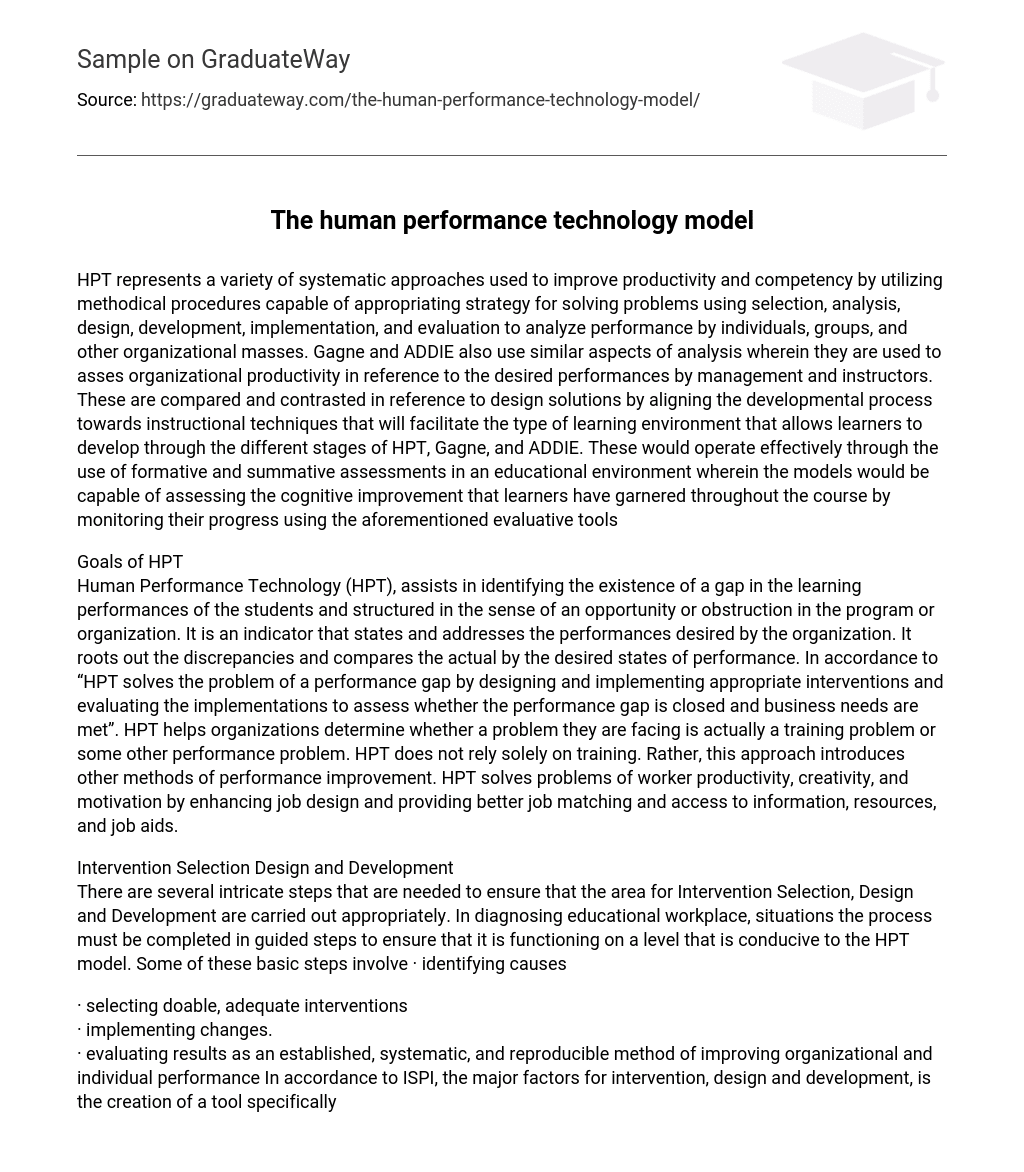HPT represents a variety of systematic approaches used to improve productivity and competency by utilizing methodical procedures capable of appropriating strategy for solving problems using selection, analysis, design, development, implementation, and evaluation to analyze performance by individuals, groups, and other organizational masses. Gagne and ADDIE also use similar aspects of analysis wherein they are used to asses organizational productivity in reference to the desired performances by management and instructors. These are compared and contrasted in reference to design solutions by aligning the developmental process towards instructional techniques that will facilitate the type of learning environment that allows learners to develop through the different stages of HPT, Gagne, and ADDIE. These would operate effectively through the use of formative and summative assessments in an educational environment wherein the models would be capable of assessing the cognitive improvement that learners have garnered throughout the course by monitoring their progress using the aforementioned evaluative tools
Goals of HPT
Human Performance Technology (HPT), assists in identifying the existence of a gap in the learning performances of the students and structured in the sense of an opportunity or obstruction in the program or organization. It is an indicator that states and addresses the performances desired by the organization. It roots out the discrepancies and compares the actual by the desired states of performance. In accordance to “HPT solves the problem of a performance gap by designing and implementing appropriate interventions and evaluating the implementations to assess whether the performance gap is closed and business needs are met”. HPT helps organizations determine whether a problem they are facing is actually a training problem or some other performance problem. HPT does not rely solely on training. Rather, this approach introduces other methods of performance improvement. HPT solves problems of worker productivity, creativity, and motivation by enhancing job design and providing better job matching and access to information, resources, and job aids.
Intervention Selection Design and Development
There are several intricate steps that are needed to ensure that the area for Intervention Selection, Design and Development are carried out appropriately. In diagnosing educational workplace, situations the process must be completed in guided steps to ensure that it is functioning on a level that is conducive to the HPT model. Some of these basic steps involve · identifying causes
· selecting doable, adequate interventions
· implementing changes.
· evaluating results as an established, systematic, and reproducible method of improving organizational and individual performance In accordance to ISPI, the major factors for intervention, design and development, is the creation of a tool specifically for guidance, which prioritizes the implementation process, ranked by the importance and relevance of the interventions, these are: Learning
Performance support (includes instructional and Non Instructional) Job Analysis/work design
Personal development
Human resource development
Organizational communication
Organizational design and development and
Financial systems
Within these categories for intervention are general terms that places and outlook on the interventions and the categories listed and ranked above. The purpose of these interventions is to have in place a design that factors specific protocols for the organization and to ensure the direct approach for guidance and methodology. It allows one to more easily determine the appropriate interventions keyed to a particular source of variance.
Van Tiem, D. M., Moseley, J. L., & Conway, J. (2000). Fundamentals Of Performance Technology: A Guide To Improving People, Process, And Performance Author: Darlene M. Van Tiem.





